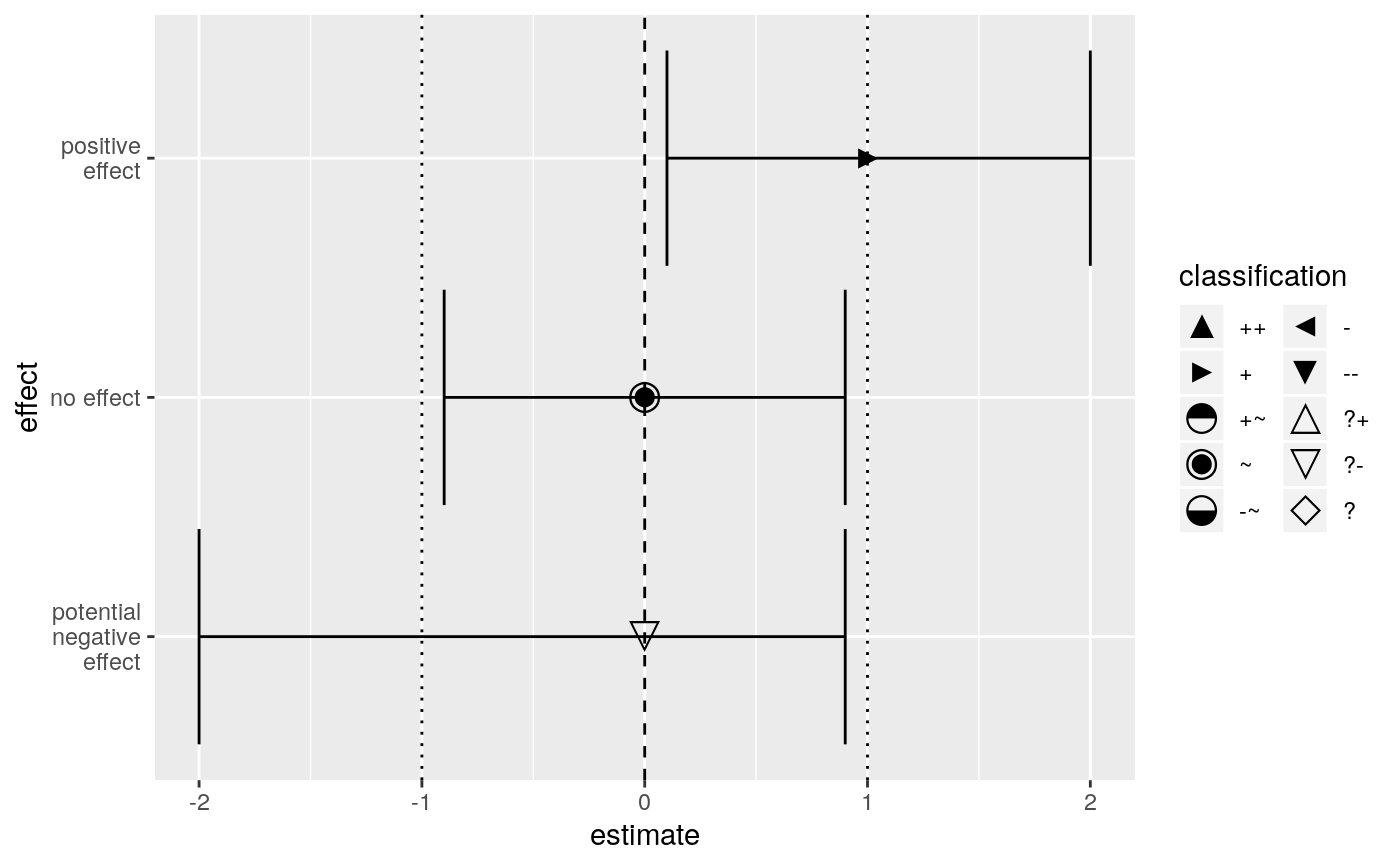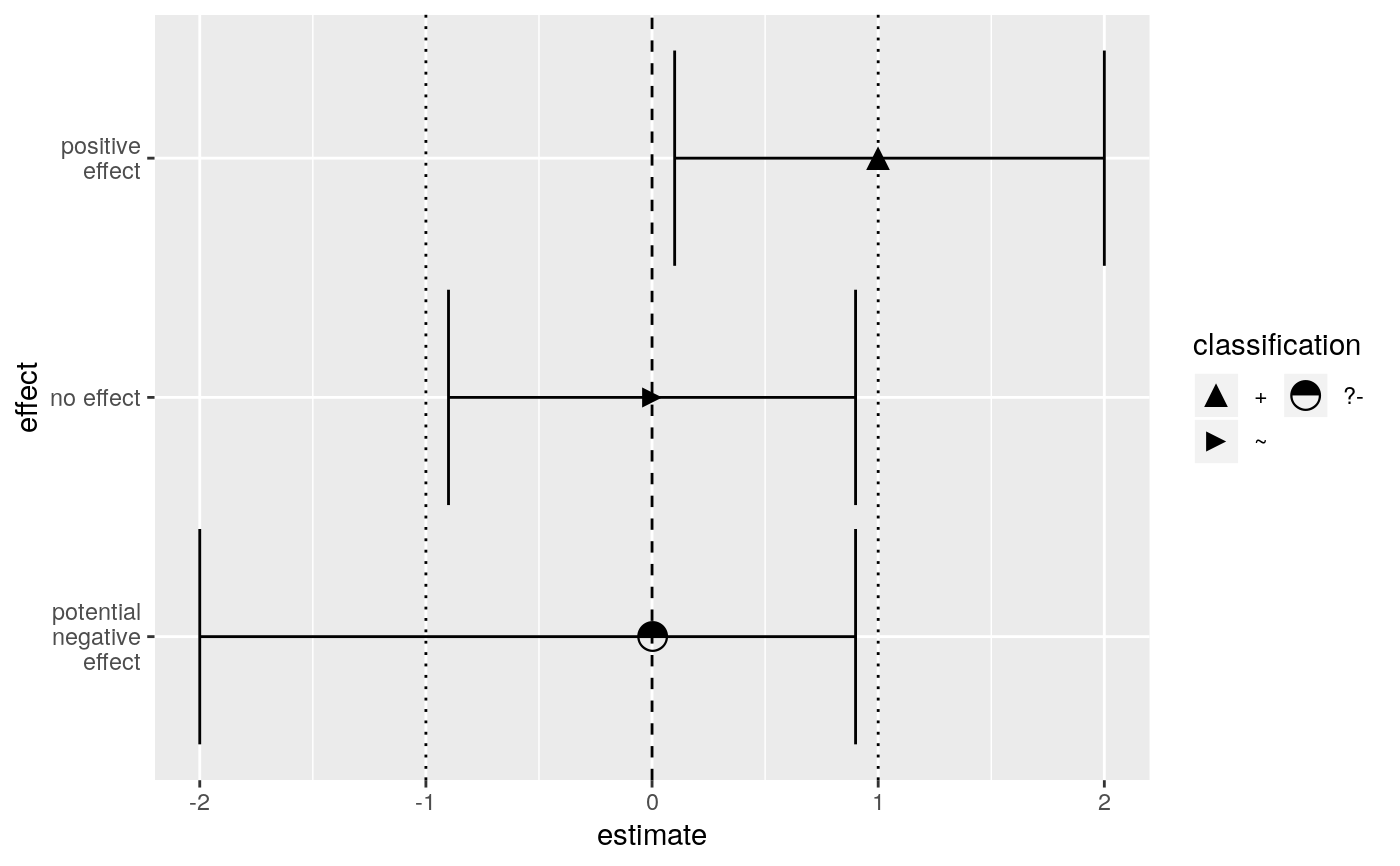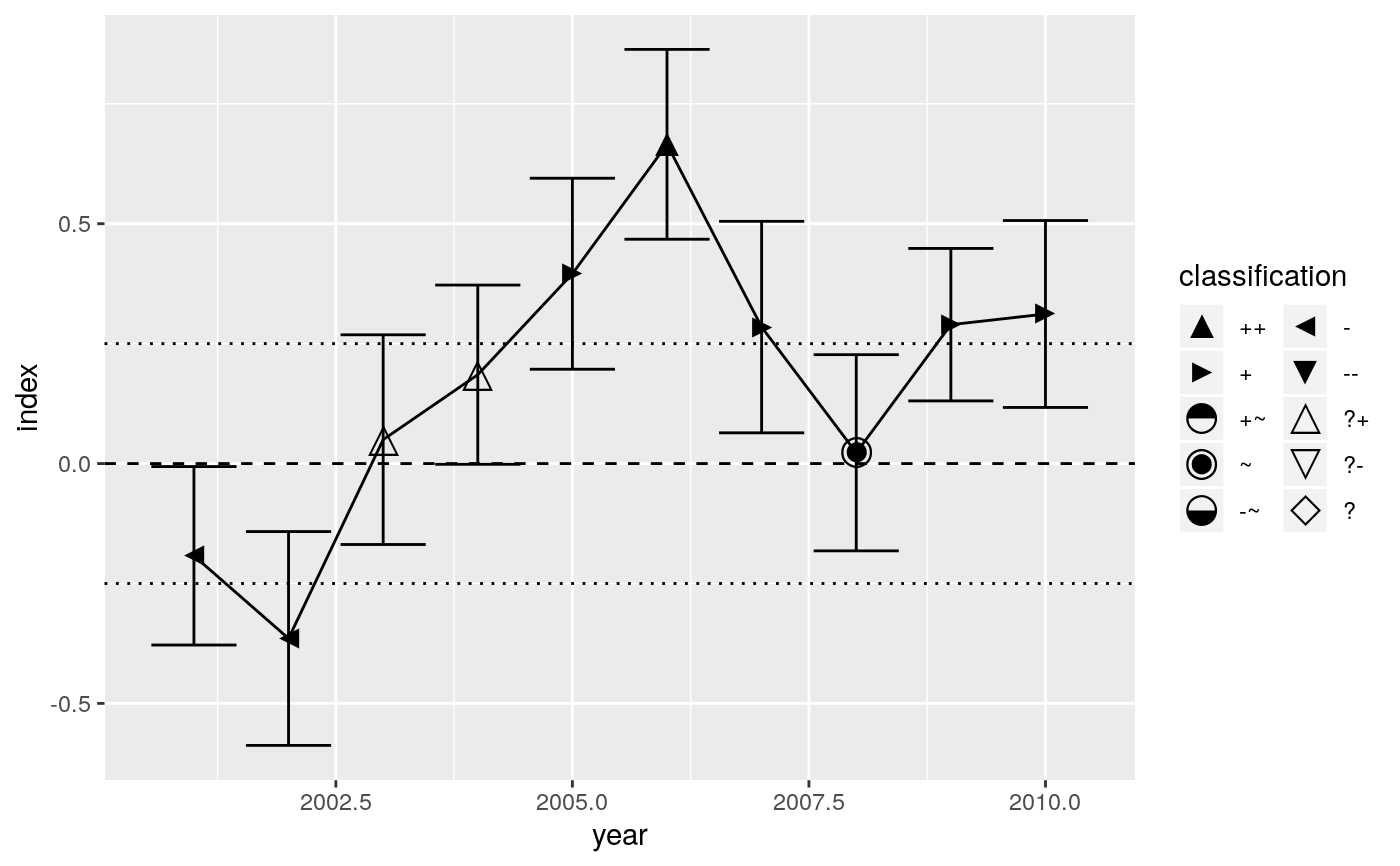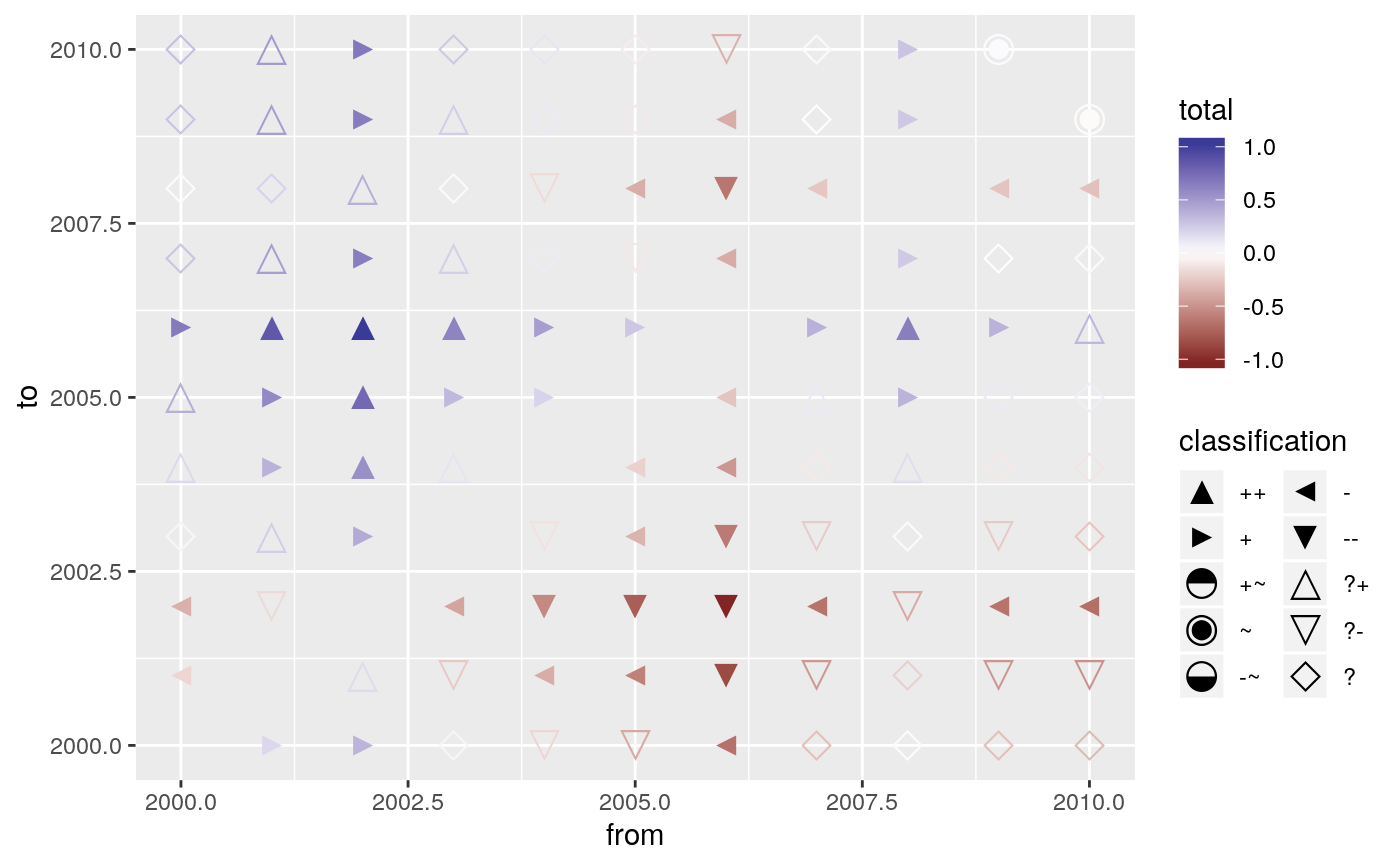Display points with classified effect
stat_effect.RdDisplay points with classified effect
stat_effect(mapping = NULL, data = NULL, position = "identity", na.rm = FALSE, show.legend = NA, inherit.aes = TRUE, ..., threshold, reference = 0, detailed = TRUE, signed = TRUE)
Arguments
| mapping | Set of aesthetic mappings created by |
|---|---|
| data | The data to be displayed in this layer. There are three options: If A A |
| position | Position adjustment, either as a string, or the result of a call to a position adjustment function. |
| na.rm | If |
| show.legend | logical. Should this layer be included in the legends?
|
| inherit.aes | If |
| ... | Other arguments passed on to |
| threshold | A vector of either 1 or 2 thresholds.
A single threshold will be transformed into
|
| reference | The null hypothesis. Defaults to 0. |
| detailed |
|
| signed |
|
See also
Other ggplot2: scale_effect,
stat_fan
Examples
z <- data.frame( effect = factor( 1:10, labels = c("unknown\neffect", "potential\npositive\neffect", "potential\nnegative\neffect", "no effect", "positive\neffect", "negative\neffect", "moderate\npositive\neffect", "moderate\nnegative\neffect", "strong\npositive\neffect", "strong\nnegative\neffect") ), estimate = c( 0, 0, 0, 0, 1, -1, 0.5, -0.5, 1.5, -1.5), lcl = c(-2, -0.9, -2, -0.9, 0.1, -2, 0.1, -0.9, 1.1, -2), ucl = c( 2, 2, 0.9, 0.9, 2, -0.1, 0.9, -0.1, 2, -1.1) ) oldw <- getOption("warn") options(warn = -1) library(ggplot2) theme_set(theme_grey(base_family = "Helvetica")) update_geom_defaults("point", list(size = 5)) ggplot(z, aes(x = effect, y = estimate, ymin = lcl, ymax = ucl)) + geom_hline(yintercept = c(-1, 1, 0), linetype = c(3, 3, 2)) + geom_errorbar() + stat_effect(threshold = 1) + scale_effect() + coord_flip()ggplot(z[3:5, ], aes(x = effect, y = estimate, ymin = lcl, ymax = ucl)) + geom_hline(yintercept = c(-1, 1, 0), linetype = c(3, 3, 2)) + geom_errorbar() + stat_effect(threshold = 1) + scale_effect() + coord_flip()ggplot(z[3:5, ], aes(x = effect, y = estimate, ymin = lcl, ymax = ucl)) + geom_hline(yintercept = c(-1, 1, 0), linetype = c(3, 3, 2)) + geom_errorbar() + stat_effect(threshold = 1) + scale_effect(drop = TRUE) + coord_flip()# plot indices set.seed(20190521) base_year <- 2000 n_year <- 10 z <- data.frame( dt = seq_len(n_year), change = rnorm(n_year, sd = 0.2), sd = rnorm(n_year, mean = 0.1, sd = 0.01) ) z$index <- cumsum(z$change) z$lcl <- qnorm(0.025, z$index, z$sd) z$ucl <- qnorm(0.975, z$index, z$sd) z$year <- base_year + z$dt th <- 0.25 ref <- 0 ggplot(z, aes(x = year, y = index, ymin = lcl, ymax = ucl, sd = sd)) + geom_hline(yintercept = c(ref, -th, th), linetype = c(2, 3, 3)) + geom_errorbar() + geom_line() + stat_effect(threshold = th, reference = ref) + scale_effect()# plot pairwise differences change_set <- function(z, base_year) { n_year <- max(z$dt) total_change <- lapply( seq_len(n_year) - 1, function(i) { if (i > 0) { y <- tail(z, -i) } else { y <- z } data.frame( from = base_year + i, to = base_year + y$dt, total = cumsum(y$change), sd = sqrt(cumsum(y$sd ^ 2)) ) } ) total_change <- do.call(rbind, total_change) total_change <- rbind( total_change, data.frame( from = total_change$to, to = total_change$from, total = -total_change$total, sd = total_change$sd ) ) total_change$lcl <- qnorm(0.025, total_change$total, total_change$sd) total_change$ucl <- qnorm(0.975, total_change$total, total_change$sd) return(total_change) } ggplot(change_set(z, base_year), aes(x = from, y = to, ymin = lcl, ymax = ucl)) + stat_effect(threshold = th, reference = ref, aes(colour = total)) + scale_colour_gradient2() + scale_effect()




